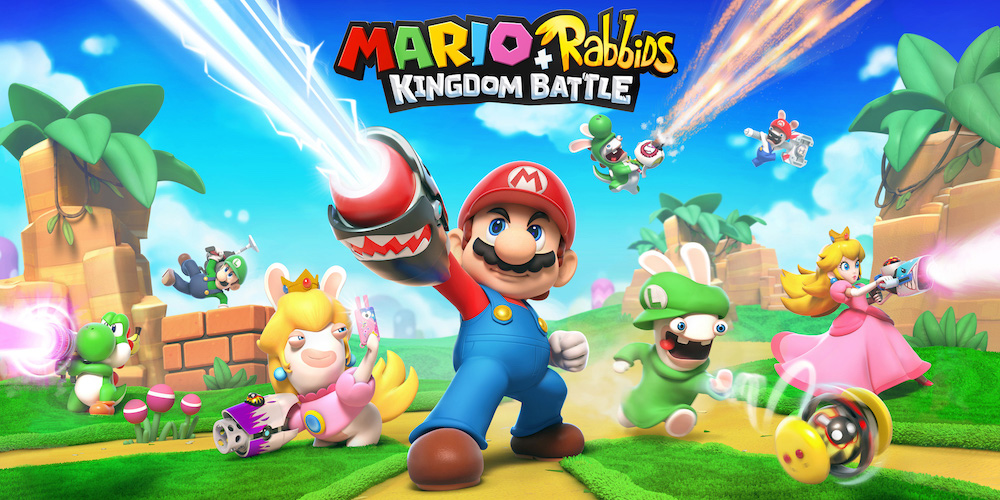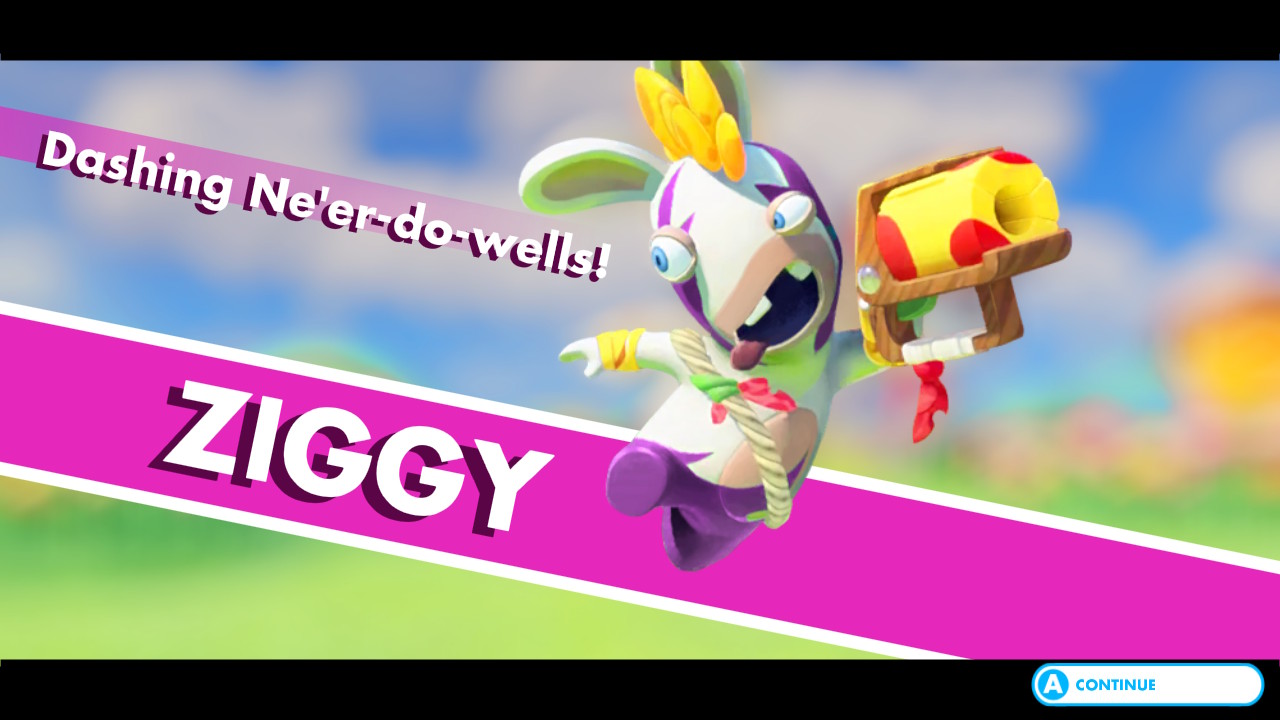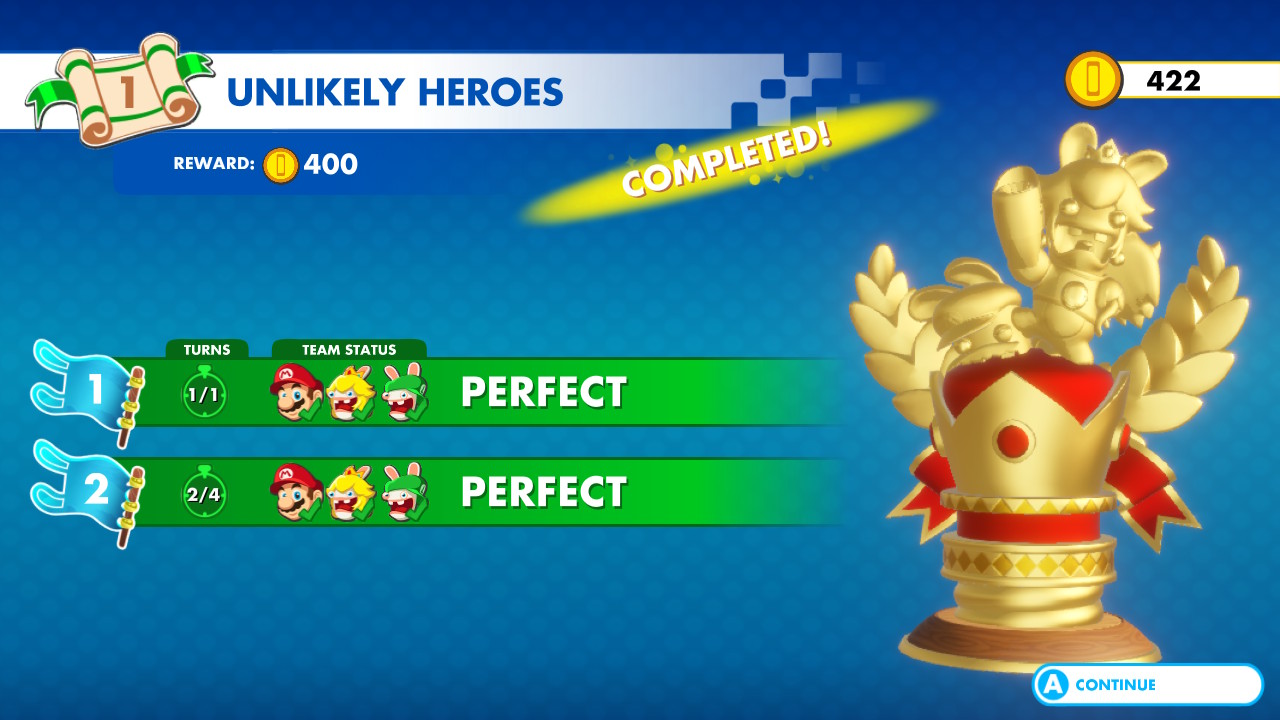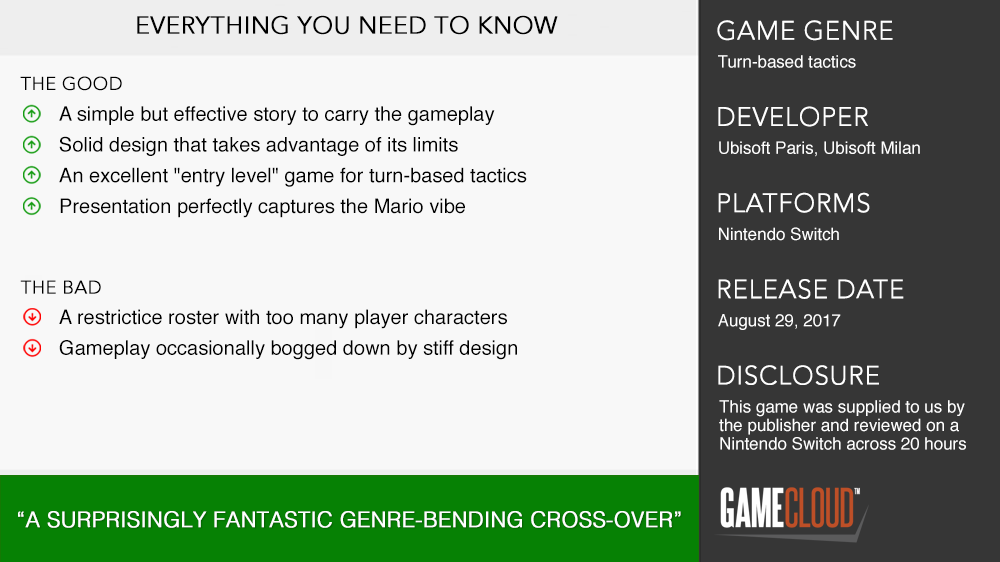
So if I haven’t been knee-deep in alien giblets for the past month with XCOM 2, I’ve been playing another strategy game in Mario + Rabbids Kingdom Battle (MRKB). Honestly, I think I’m going a little peculiar, seeing grids forming on the ground in the periphery of my vision. I think would be fair to say that this is essentially a lighter version of XCOM; in fact, I’m surprised at the level of strategic depth present in the game. It only goes so far, of course – it is a Mario game after all, and thus open and welcoming to all players. It’s also pretty light and cartoony in its portrayal of violence, as you’d expect from a romp with Nintendo’s moustachioed mascot. Despite its limited and stiff mechanics or its determination for a G rating, MRKB is still one of the most entertaining games to be released for the Switch to date.

It’s only in my wildest dreams that there’d be a real, officially licensed Mario game where he actually delivers old western style justice to Bowser.
As this is Ubisoft creation, it was, of course, going to be a crossover, but instead of the logical (and awesome) choice of Rayman, they chose the Rabbids. For the record, I’ve traditionally hated the Rabbids; much like a screaming, uncontrollable child in a shopping centre, they’re only funny for so long before I want to punt them across the room. Weirdly enough, however, their presence fits rather well in MRKB, since the story itself is similarly deranged in concept but in a way that made both endearing to me. Starting in an approximation of the real world, an accident in the lab of a programmer/engineer/possible mad genius results in the Rabbids entering the real world before dogpiling into Mario’s. There are a few more details about it, but that’s the gist.
Despite a lot of attention apparently having been put into writing observations for the Rabbids’ various activities around the Mushroom Kingdom, the story itself isn’t really the draw here. Firstly, it’s an official Mario game; without even playing it you can probably guess how it will end. Secondly, the details of the narrative only seem to serve two purposes: artificially limiting your progress to a trickle throughout the game, and dodging the violence aspect. New abilities are slowly unlocked throughout the game as the Rabbid infestation is cleared away, and no one actually dies. Rabbids digitise and beam up into the big code analogy in the sky, while your own team just gets knocked to the ground and sees stars. In essence, we’re touring for the scenery, not staying for the country retreat.

It’s time for shooty bang-bang, not storytelling.
The game is split into grid-based, tactical battles and exploring each world for coins and collectables. Movement when exploring is more like Captain Toad than your average Mario game, as you’re not actually controlling Mario but a small, floating, disc-shaped robot. This limitation of movement is tied into a lot of the puzzles that are present in each world, with the reward usually being more collectables. These prizes are occasionally new weapons, so it’s worth trying to solve any you come across. That said, you’ll have to backtrack for them later once you’ve obtained a new ability for exploration. Just using these items are the solutions to puzzles a lot of the time, which makes them less like puzzles and more like memory challenges. It’s a lazy filler for an otherwise great idea, well executed, as fun filler between battles.
The battles themselves have a surprising amount of tactical depth to them, if only because I wasn’t really expecting there to be any. Rabbid versions of Mario characters tend to reflect their counterparts in some design aspect beyond appearance, and more than a few characters share weapons types. Despite this, each character has a unique ability that makes them much more useful in certain missions over others. Those uses are mainly due to the stiff number of strategic planning choices present in this game. Each character only every gets one weapon type, for instance, and there’s little to no environment interaction beyond cover destruction. It does mean, however, that it’s worth planning your attack a little bit before rushing headlong into battle.

Even at just a step above cannon-fodder, these guys can still be dangerous.
As a Mario game, it isn’t unexpected that there’s a lot of inflexibility or that they tried to keep things as simple as possible. MRKB often uses these limitations to its advantage, however, making missions interesting and challenging, or, at the very least, giving the player cause to reconsider their party combination. Some characters are absolutely better for certain levels than others, but the game doesn’t always make handling these levels easy. You can only have three party members at once, and Mario must be one of them, as well as one Rabbid character because of…reasons? Add to that the fact that a random party member gets bumped to make room whenever a new character is introduced, and the player agency surrounding party composition is somewhat diminished.
Patience and good tactical planning are rewarded in MKRB, insofar as you’ll complete the level with everyone alive for your efforts. In most tactical games that would be enough, but your performance is measured in both team members kept alive and the speed at which you complete the level. Your performance is directly tied to your coin reward, which in turn allows you to upgrade your gear. So, to keep your rating up, you’ll end up doing stupid things like gunning for that bruiser-type despite it putting you in the sights of seven other enemies. I’m still unsure if this is brilliant or terrible design, but it definitely keeps things interesting. There’s also a way to replay old levels, and there are separate challenge levels that offer additional rewards, so even if it’s slow going you can still grind for progress if nothing else.

A requirement if you want your weapons to keep on doing damage, really.
MRKB is relatively short, with only four worlds being present in the campaign. Granted, each one has eight levels, and these do offer a decent amount of content, but the overall package is shorter than one might have expected. This also means that player characters continue to be introduced throughout the game, right up to the last world. Instead of focusing on a few Heroes whose play styles you learn to adapt to a variety of situations while powering up, there’s just a constant barrage of new information. Except for Mario, I don’t think I kept any one character in my party for more than a couple of missions at a time. Some might see this as a good thing, but these aren’t so many expendable, replaceable XCOM soldiers to be tossed into the grinder. MKRB’s characters have well-established personalities that could have enjoyed more face time overall.
All that said, Ubisoft has done a wonderful job of capturing the general Mario vibe and channelling it into an altogether foreign genre for the titular plumber. Each world feels familiar because of its themes and appearance while still appearing unique by following MKRB’s style. The Rabbid versions of each character are surprisingly funny parodies of their Nintendo counterparts, and many classic Mario villains have been Rabbid-ised to fill out the rogue’s gallery. Longtime Nintendo fans might also feel some oddly placed nostalgia when they hear the music, as well. Composer Grant Kirk has put the game’s soundtrack together, and there are a lot of moments that sound more than just a little similar to the N64’s Banjo-Kazooie.

As in, “Holy crap, I could swear this is just a remix,” similar. Maybe that’s just me though – you be the judge.

When I first saw the leaks for Mario + Rabbids Kingdom Battle, my mind was immediately filled with images of Shadow the Hedgehog holding a gun. It seemed like an idea that just wasn’t going to work. Now that it’s here, however, I’m pleasantly surprised that Ubisoft managed to basically knock it out of the park. Mixing some of Mario’s familiar exploration and puzzle elements with a simple but robust combat system has resulted in a short but enjoyable detour off the regular track for Mario. I do have a couple of gripes about how the team is assembled at many points of the game, but it’s not the worst thing to ever happen. That aside, there’s very little to fault with the game – I’d even go as far as saying that I’d love to see a sequel.











